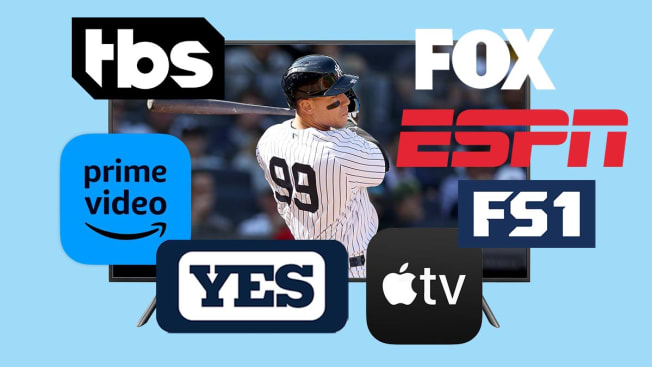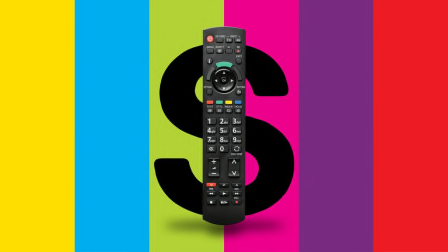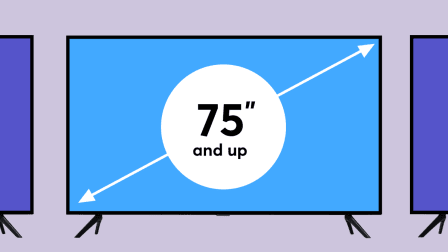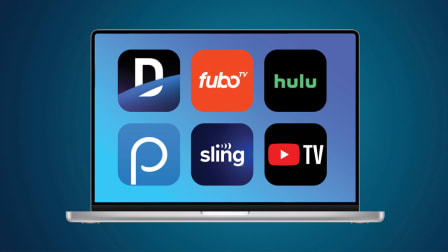Why It’s So Hard to Find Sports on TV
Fans, including the author's Yankees-obsessed wife, now need multiple subscriptions—and lots of patience—to follow their teams

It’s getting increasingly difficult—and very frustrating—to follow your favorite teams on TV.
My wife is a prime example. A devoted baseball fan, Lisa has to constantly flip back and forth among different cable channels and streaming services to catch every New York Yankees game, even though we have access to the team’s own YES regional sports network.
A lot of those games are now spread across various TV networks and streaming services. It’s expensive to pay for them all, and aggravating to figure out where each game is being shown. And it’s not just the Yankees—you have the same problem if you’re a fan of another baseball team, an NFL franchise, or teams in other sports, from soccer to hockey.
Let’s start with cable and satellite TV. Sports have been called the glue that keeps many people stuck to traditional TV plans, and that’s my situation. I write about cord-cutting all the time, but I haven’t been able to cut the cord myself because of the damn Yankees.
How Watching Sports Got So Complicated
Back in the halcyon days of my youth, Yankees games were broadcast on a local over-the-air channel, WPIX-11. In the late 1970s, the landscape changed when games started being simulcast on new, sports-centric channels. By 2000, most markets had some type of regional sports network, or RSN. Teams typically split their games between a local broadcast TV station and the RSN. But as the number of cable subscribers grew, more games shifted to the RSNs.
That’s what happened here in New York with the YES regional sports network, which is owned by the Yankees, Sinclair Broadcasting, Amazon, and investor groups. Until 2022, there was always a broadcast partner—like WPIX-11—that carried a package of Yankees games. But that year, Amazon took over those games exclusively, so for the first time there were no Yankees games on the old TV channel.
I’m okay with that, but it’s harder to accept that my wife and I can’t watch all the games on YES. (That “Y” stands for Yankees, right?) And it’s not like just one or two games are missing. This year, the Yankees games will be broadcast not only on YES but also on ESPN, Fox, FS1, and TBS.
Those channels are all included in our expensive satellite TV service. But it doesn’t stop there.
To see literally every single Yankees game—something apparently stipulated in our marriage vows—we need a paid subscription to Apple TV+, which extended its rights to stream two live MLB games every Friday throughout the 2025 regular season. So far, there are two Yankees games on the schedule for the first half of the season. (The second-half schedule hasn’t yet been released.)
One bit of good news: Last season, Roku signed a multiyear deal for the rights to "MLB Sunday Leadoff," an 18-game package—including one Yankees game—that’s available on the Roku Channel, the company’s free ad-supported service. Prior to the Roku deal, "Sunday Leadoff" was on Peacock, which required a $6-a-month Peacock TV Premium subscription. While the Roku Channel is available on all Roku devices, it’s also accessible on Amazon Fire TV and Google TV players and TVs, as well as on the Roku website.
Gear Up
See CR’s picks for the best TVs and 4K streaming devices.
But if you’re a Yankees fan who doesn’t live near New York or can’t get access to YES, you’ll need MLB.TV for out-of-market games, and that’s $30 a month or $150 a year.
And oh, yeah, honey, remember that exclusive Amazon deal mentioned above? To watch the 21 nighttime Yankees games Amazon will show this season—mainly on Wednesday nights—we need an Amazon Prime membership. That’s $139 a year.
To be clear, other sports are just as hard to follow on TV.
In 2022, NFL football fans saw “Thursday Night Football” jump to Amazon Prime from Fox as part of an exclusive deal that runs through 2033. Amazon is also expected to host a game on Black Friday this year. If you want to see “Monday Night Football” this fall, you’ll need ESPN or the Spanish-language ESPN Deportes. (Some games are also on ABC, and ESPN+ has one exclusive game.) NBCUniversal’s Peacock also has a deal that gives it one exclusive in-season game in 2025, while Netflix will exclusively stream two Christmas Day games. (A third game will be on Amazon as part of its Thursday night schedule.) That’s in addition to the other NFL football games on CBS (and Paramount+), Fox, and NBC (and Peacock).
Where Is That Game Again?
As my wife knows all too well, figuring out when and where games can be watched has become a full-time chore, given the 162-game baseball season. (The DirecTV program guide lists only the games shown on its service.) For example, Amazon started out showing its games on Fridays, but they’re now on Wednesdays; Apple TV+ picked up the Friday night games.
And it’s not just the added complexity and cost, my wife says. She has grown accustomed to the YES announcers, plus the way game stats—pitch count, ball and bat speeds, the runners on base, and the number of outs—are displayed on YES. Switching networks often removes those familiar connections.
Unfortunately, this is a trend. While YES is the most profitable, most-watched regional sports network in the country, many others are in trouble. Their business model is changing, as cord-cutting hits record levels. That means fewer subscribers are paying for plans that include regional sports, and many cable-style streaming services are dropping those networks.
CR shows you how to replace cable TV for less than $25 a month and get a stronger WiFi signal.
As a result, many RSNs are stuck in sports rights deals that no longer make financial sense, too. Some have filed for bankruptcy protection, while some teams have taken back their TV rights and either had the league take over broadcasts or launched their own direct-to-consumer services. All this means that it’s likely that we’ll see more sports events shift away from RSNs to other options.
As for me, I recently texted my wife with a link to the New York Yankees broadcast schedule—including where the games will be available to watch—and suggested that she keep it on her phone.
Her suggestion to me? I can’t repeat it here.




















